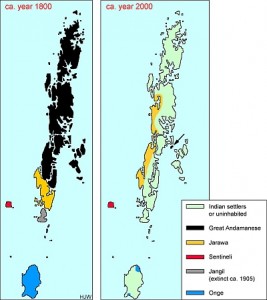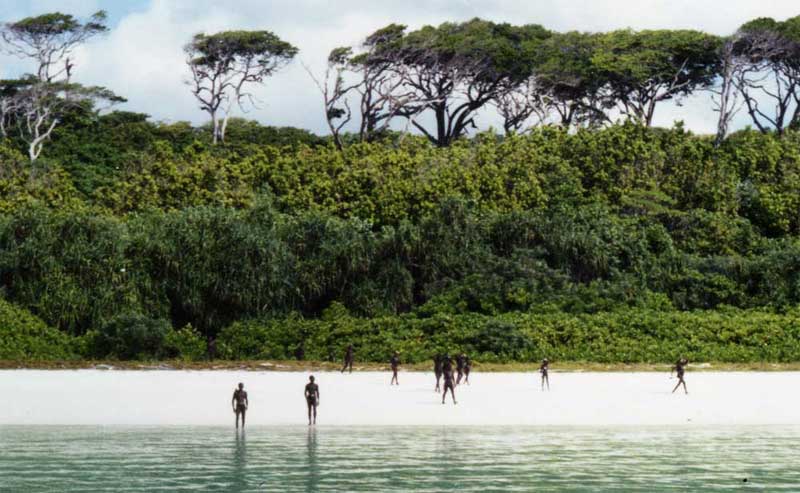A small island in the Andaman Sea, North Sentinel Island might be the least visited inhabited island on earth, a testament to cultural survival through isolation.

Andaman tribes population
The Andaman Islands feature several tribes scattered over the main islands of the archipelago: The Great Andamanese, the Jarawa, the Onge and the Sentinelese, the latter residing solely on North Sentinel Island.
The Andaman tribes that didn’t go extinct have been tragically decimated in the past 200 years by colonial wars, loss of hunting territory, diseases and alcohol. There are only 50 Great Andamanese left alive today, between 200 and 400 Jarawa, and less than 100 Onge.
While it’s been relatively easy to study the tribes living on most Andaman Islands, it hasn’t been the case with the Sentinelese, who vigourously refuse contact with the outside world. Most attempts in the past 200 years have been met with defiance and arrows. Hence the number of Sentinelese cannot be known with certainty: estimations vary between 40 to 250. Their language and customs remain unknown, but drawing from the other Andamanese tribes, it’s estimated that they’ve occupied North Sentinel Island for over 60’000 years.
Geographically, North Sentinel Island lies West of Great Andaman, protected by coral reef that make it very dangerous for ships to attempt to reach the shore. The size and physical configuration of the island has protected it from invasion even more surely than the hostility of its inhabitants. The few contacts that took place in the 20 and 21st centuries are reminicent of the Age of Discovery, in the time of of Columbus or Captain Cook. Offerings were placed on the beach, before the visitors were systematically greeted with bows and arrows.
One such encounter took place in a dramatic fashion in 1981, when the Primrose ran aground on a reef on the Northern shore of the island. At dawn, the crew realized the inhabitants of the island were hostile towards them, throwing arrows from the shore about 100 yards away. However, since the waters were too rough for the islanders to reach the stranded boat, no injury resulted from this encounter, and the crew was rescued by a helicopter later on. Here’s a full account of the shipwreck.
The last recorded visit to the island goes back to 2004. After the Tsunami, government officials were worried that the population had been decimated. To disprove this assumption, an helicopter that threw food on the shore was met with stones and arrows. As was the case elsewhere in Andaman and Nicobar, the original tribes survived much better than the subsequent settlers. According to many accounts, when the water receded, they headed for the hills, as such events were long part of their oral tradition.
Today, there is a three-mile exclusion zone around North Sentinel Island, and official contacts with the Sentinelese have been discontinued.


